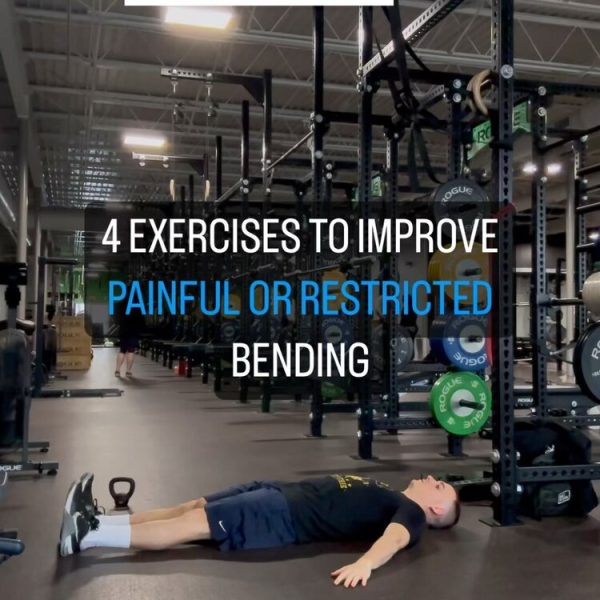Dr. Will Murtagh is a performance physical therapist and writer who helps Fitness Athletes elevate their fitness and train pain-free.
The snatch movement is one of the fundamental movements in CrossFit, and quite literally, it is the sport of Olympic Weightlifting.
Both the full snatch and the power snatch are among the most commonly programmed movements in CrossFit and frequently appear in every level of competition, from the CrossFit Open to The CrossFit Games.
So, understanding the nuances of each variation and working towards technical mastery is essential for anyone looking to reach their potential in CrossFit or Olympic Weightlifting.
However, it can be challenging to understand the differences between snatch and power snatch and when to train each variation based on one’s abilities, goals, and unique needs.
Which leads to underperforming, improper lifting technique, and even potential injury in the gym.
This article will dive into the differences between the snatch and power snatch so that you can be empowered to perform each variation to the best of your ability and continue to level up your fitness and performance.
Want to improve your lifting performance, build physical resilience, and train without joint pain?
Try my Bulletproof CrossFit Program today (HERE)
What Is The Difference Between A Snatch vs Power Snatch?
Both the snatch and the power snatch are important lifts in the Olympic weightlifting and CrossFit worlds. They both require tremendous power, speed, and coordination to execute successfully.
They are also great for developing explosive strength for any CrossFit athlete or Olympic weightlifter. However, these two lifts have significant differences, with the main one being the point at which the bar is received in the catch position overhead.
In a traditional squat snatch, you will aim to catch the bar in the bottom position of the squat by exploding through the hip and descending into a squat faster than the barbell.
This increased range of motion available to catch the bar allows for the use of heavier weights because you won’t have to pull the bar as high.
The power snatch, however, has a higher catch position and limits you to a range of motion that ends just above a parallel squat position. So, if the barbell is received overhead and the hip crease is below the top of the knee, it is no longer deemed a power snatch.
This will also mean that, in most cases, the power snatch will be lighter than a regular snatch.
Both lifts begin on the floor unless otherwise stated to start from the hang position.
So, why would you intentionally limit the range of motion to complete the lift?
In any Olympic lift, power variations such as power snatch and power clean are designed to help you increase your power output and explosiveness so that you can perform full lifts when Olympic weightlifters compete at meets.
Other benefits of the power snatch include less need for optimal lower body mobility, they are better suited for metabolic conditioning inside CrossFit workouts since they are cycled better than squat snatches, and they also can provide a way to train for Olympic lifts if you have knee pain in a deep squat position.
Snatch Technique
- Start with your feet shoulder-width apart, holding the barbell with a wide grip.
- Bend your knees and hinge at the hips to lower the barbell to just below knee level, keeping your back straight and chest up.
- Explosively extend your hips, knees, and ankles to generate upward momentum on the barbell.
- As the barbell rises, shrug your shoulders and pull yourself under the barbell, simultaneously pulling the bar overhead.
- Catch the barbell in an overhead squat position with straight arms and elbows fully extended.
- Stand up to complete the lift, ensuring stability and control throughout the movement.
- Lower the barbell back to the starting position with control and repeat for the desired number of repetitions.
Power Snatch Technique
- Begin in the same starting position as the snatch technique, with feet shoulder-width apart and a wide grip on the barbell.
- Perform the same initial movement as the snatch, bending your knees and hinging at the hips to lower the barbell to just below knee level.
- Explosively extend your hips, knees, and ankles to generate upward momentum on the barbell, keeping it close to your body.
- As the barbell rises, shrug your shoulders and pull yourself under it, pulling it overhead.
- Instead of catching the barbell in an overhead squat position, catch it in a partial squat position, with your hips above parallel.
- Stand up explosively to complete the lift, driving through your heels and maintaining stability and control throughout the movement.
- Lower the barbell back to the starting position with control and repeat for the desired number of repetitions.
Strength Speed vs Speed Strength
Strength speed and speed strength are two of the four qualities on the strength training continuum, with the other two being absolute strength and absolute speed. The strength continuum illustrates the relationship between force and speed and how the two are inversely related. (1)
For example, a movement like a maximum bench press for one rep would be high force and low speed, placing it at the absolute strength end of the continuum. A 40-yard sprint would be a low-force and high-speed activity at the absolute speed end.
Strength speed and speed strength sit in the middle of this continuum, and the snatch and power snatch are perfect examples of each. Strength speed refers to the ability to exert maximal force on an external load at high velocity. (2)
Speed strength refers to exerting lower force and high velocities on an external object or your body weight. (2)
Since the snatch typically allows for heavier loads, it lends itself to strength-speed qualities, while the power snatch is more of a speed strength exercise since it will normally be done with lighter relative loads and more explosive movement.
This is important since knowing which quality you choose to develop will dictate which variation of the snath gets programmed into your training program.
Benchmarks For The Snatch vs Power Snatch
Assessing your performance for the snatch and power snatch starts with looking at how each compares to your body weight and then to each other and the back and front squats.
Lastly, the ultimate assessment will be how you compare to your competitors if you choose to compete since the point of the lift is to lift more than the person next to you.
The following benchmarks can be used to assess your strength levels for the snatch vs. power snatch.
Body weight comparisons:
Power snatch: 1.1x your body weight
Snatch: 1.3x your body weight
Lift comparisons:
Power Snatch: 55% of your Back Squat one rep max
Snatch: 72% of your Front Squat one rep max
Advantages & Disadvantages of Each
The snatch and the power snatch are excellent lifts that can benefit you as an athlete. However, each has pros and cons regarding your development and the best way for you to progress in your sport.
Although you should include both of these in your training, there are aspects to each movement that offer unique benefits and disadvantages.
Snatch Advantages & Disadvantages
Advantages
Larger Range of Motion:
Full snatches begin with the barbell on the floor in the start position, transition to a full deep squat with the weight overhead, and finish with a complete lockout of the lower body.
This effectively brings the body through the largest range of motion possible as it opens up into extension, closes down into flexion, and then opens back up to finish the movement.
This allows maximal motor unit recruitment and training of the whole body rather than just the posterior chain.
Full Body Coordination:
Coordination is one of the 10 physical skills that every human should possess.
The full snatch incorporated coordination through coordination to achieve a balanced overhead position and inter-muscle coordination to sequence the movement from the first pull to the third pull to elevate the barbell over the head.
Although there are coordination requirements in the power snatch, the squat snatch requires just a little more due to the increased range of motion and joint involvement.
Sport Specific:
The most significant advantage of the full snatch is its sport specificity. This is especially true for Olympic lifters since their sport is full snatch, clean, and jerk.
Therefore, it would benefit them the most to practice full snatches with a higher frequency than power snatches to increase the likelihood of winning.
Although this may be partially true for CrossFitters, the full snatch is one of the fundamental movements in the sport and is frequently tested for strength and metabolic conditioning events.
Disadvantages:
Not Optimal For Barbell Cycling:
Many factors of the full snatch that make it great for strengthening the entire body also make it poor for barbell cycling in sports like CrossFit, which requires high-volume lifting.
Although it is possible to cycle full snatches, you will generate much more power and less fatigue per rep by using a power snatch over a full snatch.
This is because the power snatch does not include squatting, which can quickly fatigue the legs, causing fatigue and rest breaks. It also has a faster cycle time from ground to overhead, increasing the power per repetition.
Requires More Mobility:
The full snatch will show if you lack mobility in the shoulders, spine, hips, knees, and ankles. The movement requires an almost maximal range of motion from all these joints to achieve the overhead squat position.
If you have joint restrictions, your full snatch will be inefficient and leak power. It may cause joint pain with high-volume training.
Larger Learning Curve:
The full snatch is more complex than the power snatch because of the number of joints involved, the range of motion, and the increased need to commit to dropping under the bar to receive the barbell.
This causes an increased learning curve vs the power snatch, so if the full snatch is not specific to your sport, you may be better off training the power snatch instead to develop power.
Power Snatch Advantages & Disadvantages
Advantages:
Simplified Technique:
The power snatch is more straightforward than the full snatch because it lacks a full squat position. When you pull the barbell off the floor, the primary concern for the power snatch is a powerful triple extension from the lower body.
This is contrary to the full snatch, where you need a high extension contraction from the lower body.
Still, you must transition to beating the barbell down to get to the catch position. Therefore, if you’re primarily concerned with power development and not the skill of snatching, the power variation is best.
Increased Power:
The power snatch typically has more power per repetition than the squat snatch. Power is based on the load lifted multiplied by the distance traveled divided by the time it takes to achieve it.
The power snatch is a faster variation of the snatch movement due to a smaller range of motion and lighter relative loads, making it optimal for maximizing power.
Disadvantages:
Less Distance To Catch The Bar:
Since the power snatch limits how far you can descend into a squat position to catch the bar, there is less distance to drop under to complete the lift.
Although this adds an element of difficulty to the lift, it promotes an increase in power during the third pull to try and propel the barbell as high as possible. However, it also limits the weight that can be lifted per repetition.
Primarily A Posterior Chain Movement:
The posterior chain is the backside of the body and consists of all of the muscles from the upper back down to the heels. Since the power snatch doesn’t include any squatting, the movement will primarily train the posterior chain.
This is not necessarily bad, but the full snatch incorporates anterior chain training via a squat, which the power variation does not.
Common Mistakes For Snatch vs Power Snatch
These are some of my clients’ most common mistakes in my 1:1 Pain-Free Performance Program and BulletProof CrossFit Program. If you make these mistakes during training, try to correct them.
Not Using A Hook Grip
The hook grip takes your grip strength out of the equation when lifting the barbell. It uses the anatomy of your hand to lock the barbell in your palm instead of the strength of your hand and forearm.
When I first began training, I was resistant to the hook grip as I wanted to build strength in my grip, and it was uncomfortable at the start.
But snatches are not the time to develop your grip strength. Not using a hook grip will decrease the weight you can lift and how long you can hold onto the bar in CrossFit workouts.
To perform the hook grip:
– Grab the barbell as you usually would.
– Tuck your thumb under the barbell.
– Lay your fingers over your thumb.
Hips Too High In The Starting Position
To perform a single repetition of the snatch or power snatch, you will want your hips to be lower than the shoulders to engage the hips and lower back and pull the chest up.
Doing so will help keep your bar path more vertical and prevent unnecessary head movement that can lead to missed repetitions.
But, a caveat is that during barbell cycling workouts, keeping the hops in a higher position can be more beneficial to avoid rounding the barbell around the knees and increasing the speed of your sets.
Early Arm Bending
I am guilty of this fault and work on it as much as possible. A saying goes, “When the arms bend, the power ends,” which describes how as soon as you begin pulling with the arms, you lose some of the power generated by the hips.
I don’t believe this to be entirely true, but it emphasizes treating the arms as “hooks” during the lift. The arms should remain extended throughout the lift until after the third pull to maximize the power you can generate in the barbell.
Starfishing The Power Snatch
The starfish position happens when you are either too nervous or slow to drop quickly under the barbell or if your weight is too heavy for a power snatch.
The starfish catch is where the feet will spread out laterally to drop our center of mass down to catch the bar versus dropping into a quarter squat to receive the barbell in a strong, front squat position.
Catching in a starfish position is a successful repetition, but it will slow you down in barbell cycling workouts and won’t transfer well to the full snatch.
Not Reaching The Power Position
The power position is at the top of the third pull, where the barbell is sitting “in your pockets,” the chest is vertical, and the ankles, knees, and hips are slightly flexed.
The power position allows you to put the maximal amount of force generated by the hips into the barbell and maintain a vertical bar path toward the catch position.
If you don’t reach the power position and make contact on the mid to upper thigh, you may still make the lift, but it is more likely that less of your power will be transferred to the bar, and the barbell will move too far out in front of you.
Lacking Tension In The Lower Back
Before you lift the barbell off the platform with either the snatch or power snatch, the focus should be on creating as much tension in the barbell and your body as possible.
You want to think of your body as a spring being compressed in the start position, begging to be released.
This will help you explode out of the bottom and through the hips to maximize power through the hips. It will also help reduce injury risk as there is maximal tension and stability throughout your body.
To create tension in the bottom position:
– Drop the hips and pull the chest up.
– Take the slack out of the barbell.
– Retract the shoulder blades.
– Pull the armpits closed with the lat muscles.
Final Thoughts On The Snatch vs Power Snatch
Both the snatch and the power snatch are great lifts to incorporate into your training. They are excellent options to improve your strength, power coordination, balance, and work capacity as a CrossFitter.
They also perform well as Olympic weightlifters or traditional sports athletes because of their ability to develop a strong hip extension, which is correlated with sports performance. (3)
You now have everything you need to decide which movement is right for you based on their differences and unique benefits and when you should incorporate each into your training.
Practicing the snatch movement is a continuous journey to mastery, and I believe only some will achieve complete mastery. You can always be sharper, more accurate, more powerful, and lift more weight.
But that is what makes these lifts enjoyable to train. The most important factor is just starting to train both as soon as possible.
If you think you need help developing your snatch proficiency for CrossFit or Olympic Weightlifting performance, I invite you to book a free consultation for my 1:1 Pain-Free Performance Program (HERE), or if you’re not ready for an individualized program, try my Bulletproof CrossFit Program 3-days free (HERE)!
I hope to talk to you soon!
References:
- National Strength and Conditioning Association (NSCA). (2023). Velocity-based training: From theory to practice [PDF document]. Retrieved March 27, 2024. https://www.nsca.com/contentassets/7fc346ec744044b6871541e5a6ee5c63/velocity_based_training__from_theory_to.99257.pdf
- Jandačka, D., & Beremlijski, P. (2011). Determination of strength exercise intensities based on the load-power-velocity relationship. Journal of human kinetics, 28, 33–44. https://doi.org/10.2478/v10078-011-0020-2
- Suchomel, T. J., Nimphius, S., & Stone, M. H. (2016). The Importance of Muscular Strength in Athletic Performance. Sports medicine (Auckland, N.Z.), 46(10), 1419–1449. https://doi.org/10.1007/s40279-016-0486-0














